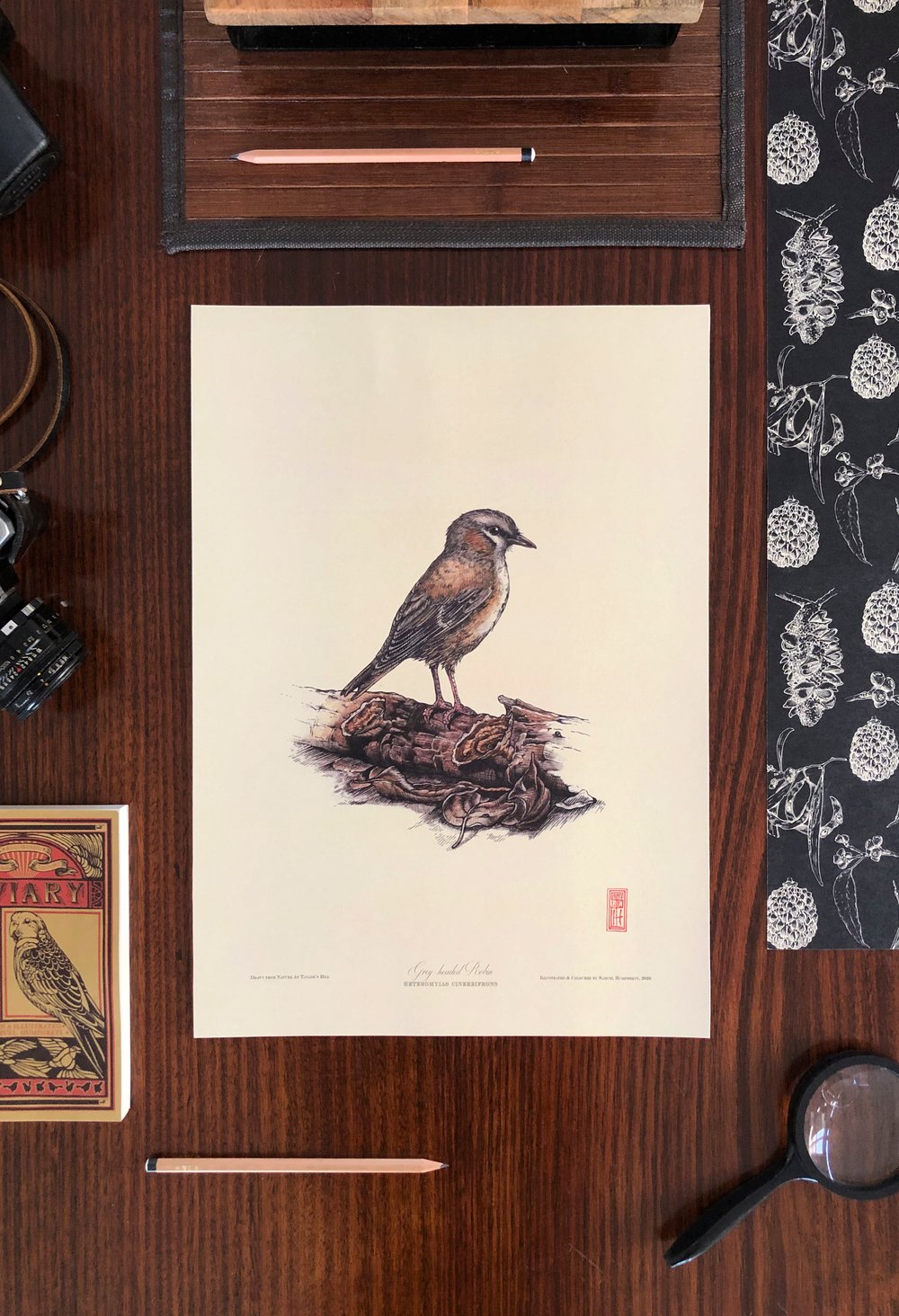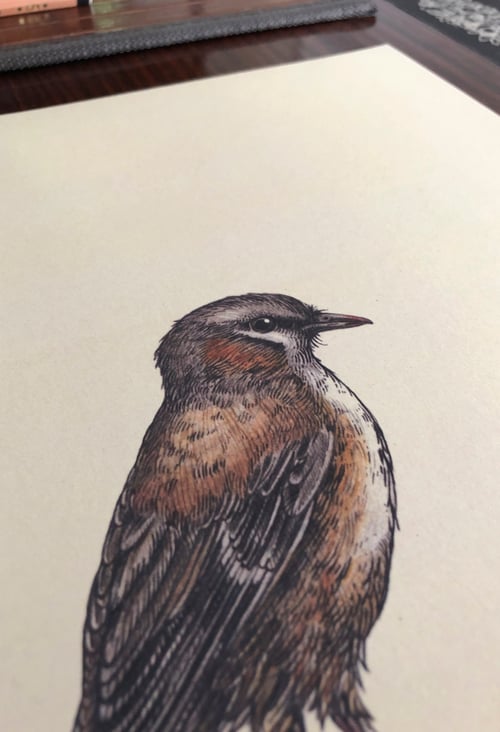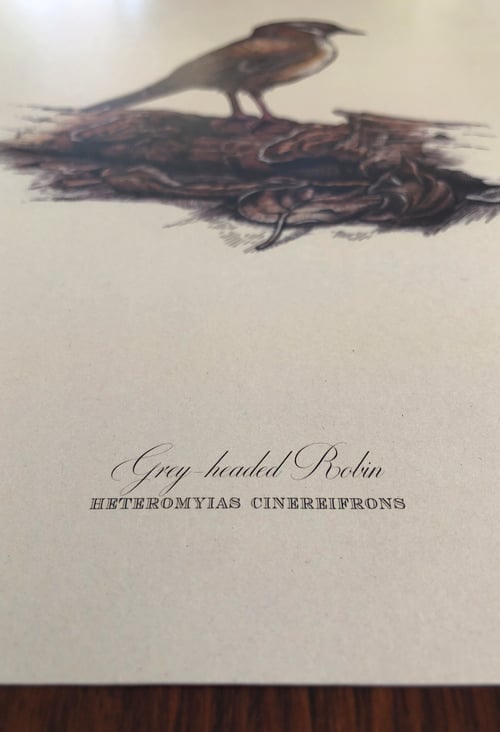Grey-headed Robin (Heteromyias cinereifrons).
$85.00
Grey-headed Robin (Heteromyias cinereifrons).
Illustrated from wild references of local birds sighted at Taylor's Hill in Malaan National Park. The grey-headed robin is perched on a decaying branch that is being consumed by the yellow-footed polypore (Microporus xanthopus) fungus. Both a common sight in the undergrowth of the rainforest where the grey-headed robin stands motionless before darting to the ground to find food.
The grey-headed robin is one of the thirteen species that are known to be strictly endemic to The Wet Tropics Bioregion. Their range is restricted mostly to the highland rainforest and only occurs at lower altitudes when the habitat is unbroken down to the lowlands. Fragmented habitat puts this bird at risk of extinction. This highlights the importance of connecting the high altitude rainforest with the lowlands, of which about 52% is now under pasture.
--
Limited edition of 50.
Archival ink on 100% recycled 300gsm matte paper.
Hand-signed & stamped.
A3 (297mm X 420mm).
Shipped in postal tubes.
--
With the purchase of your artwork, you enable a native tree to be planted on your behalf. This initiative is part of Reforest Australia's revegetation projects that sequester carbon whilst helping to restore degraded land and conserve the natural biodiversity of Australia. Your tree is a carefully selected native species that support natural ecosystems and wildlife.
--
This is a zero deforestation print edition. The paper used to produce this artwork is made from 100% recycled paper. The poster tubes, protective paper, and tape used to package these prints contain no virgin wood fibre. As a result, this artwork puts zero pressure on the forest systems of the world and supports a sustainable method of art production.




